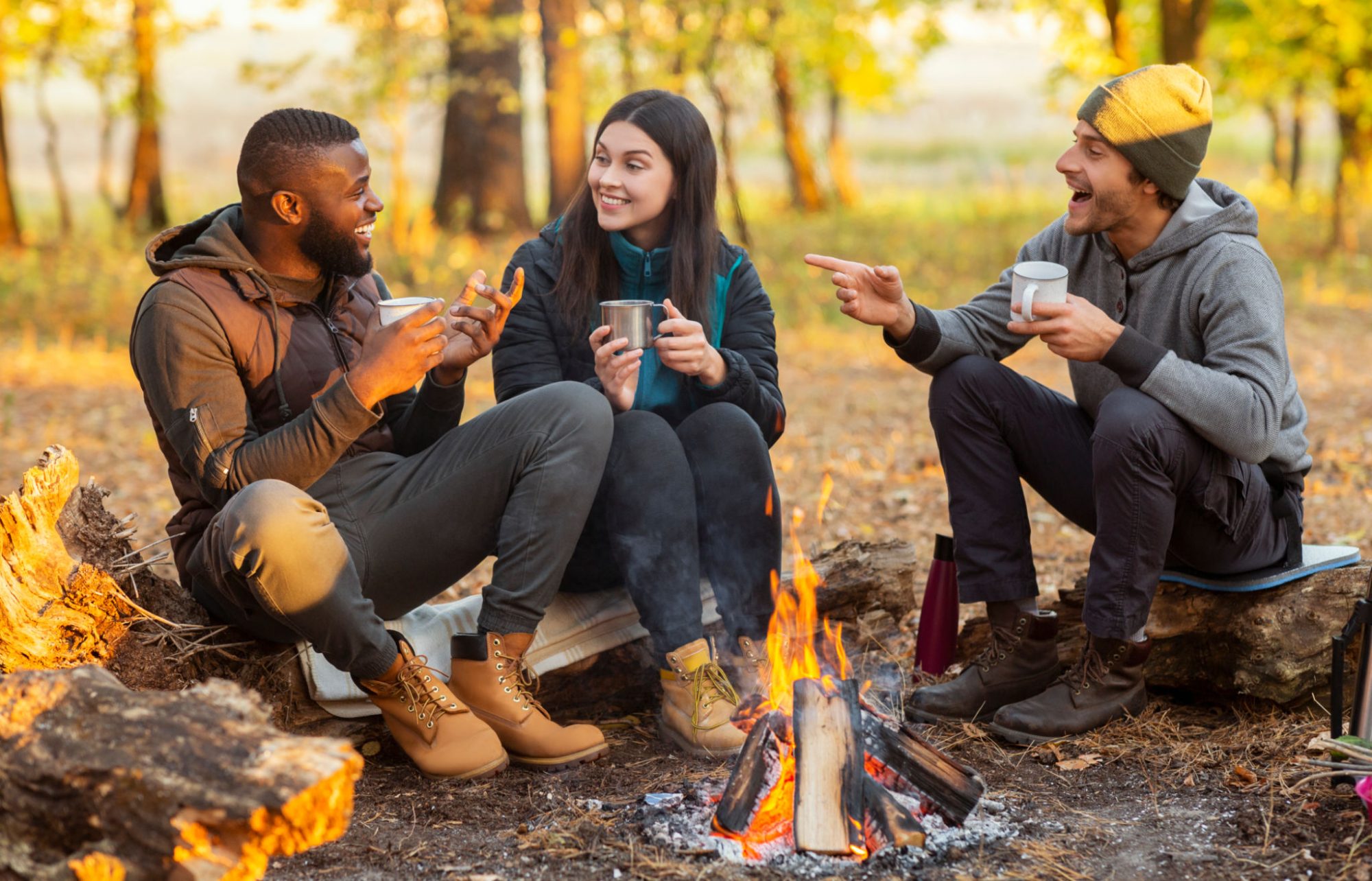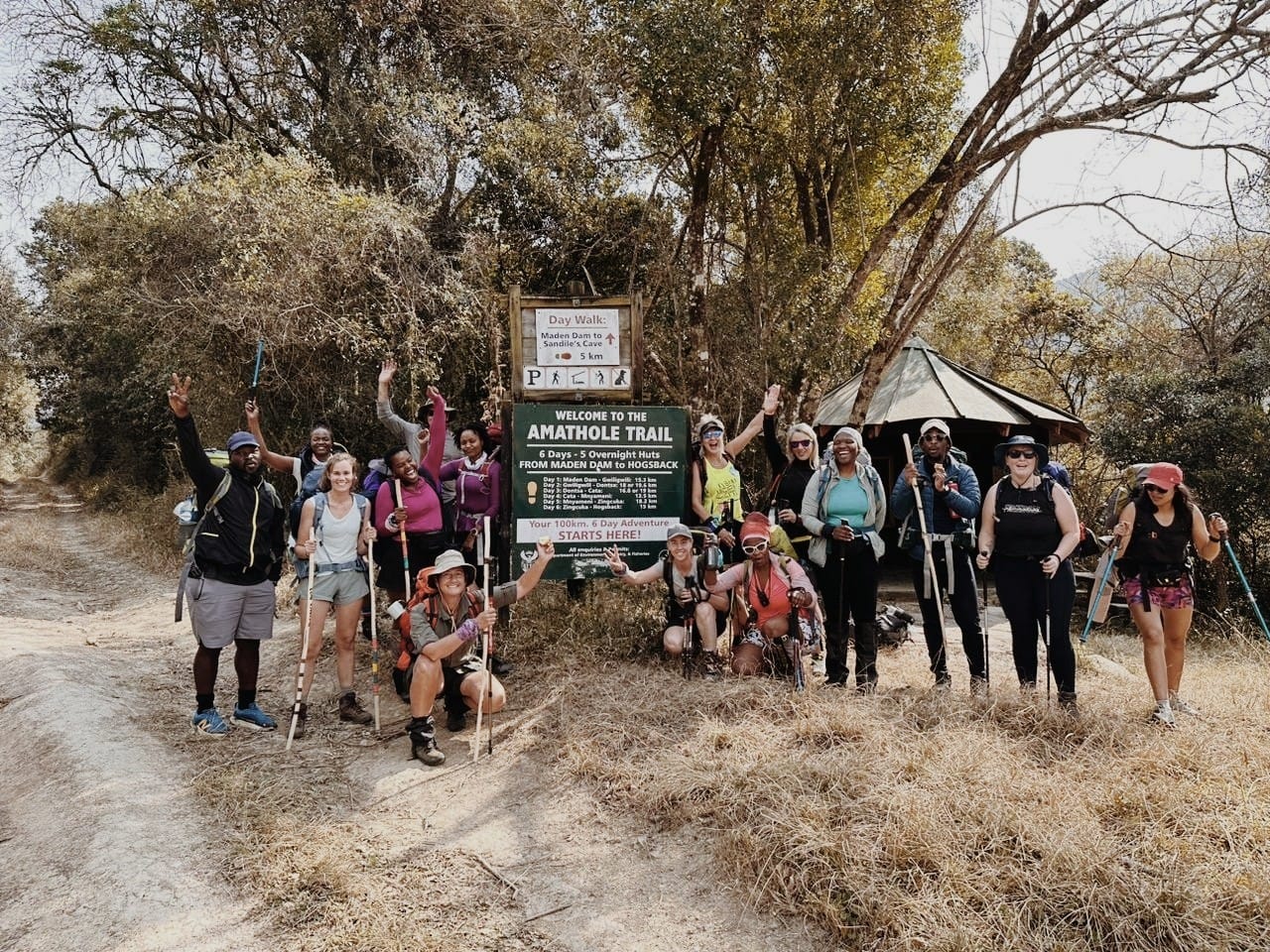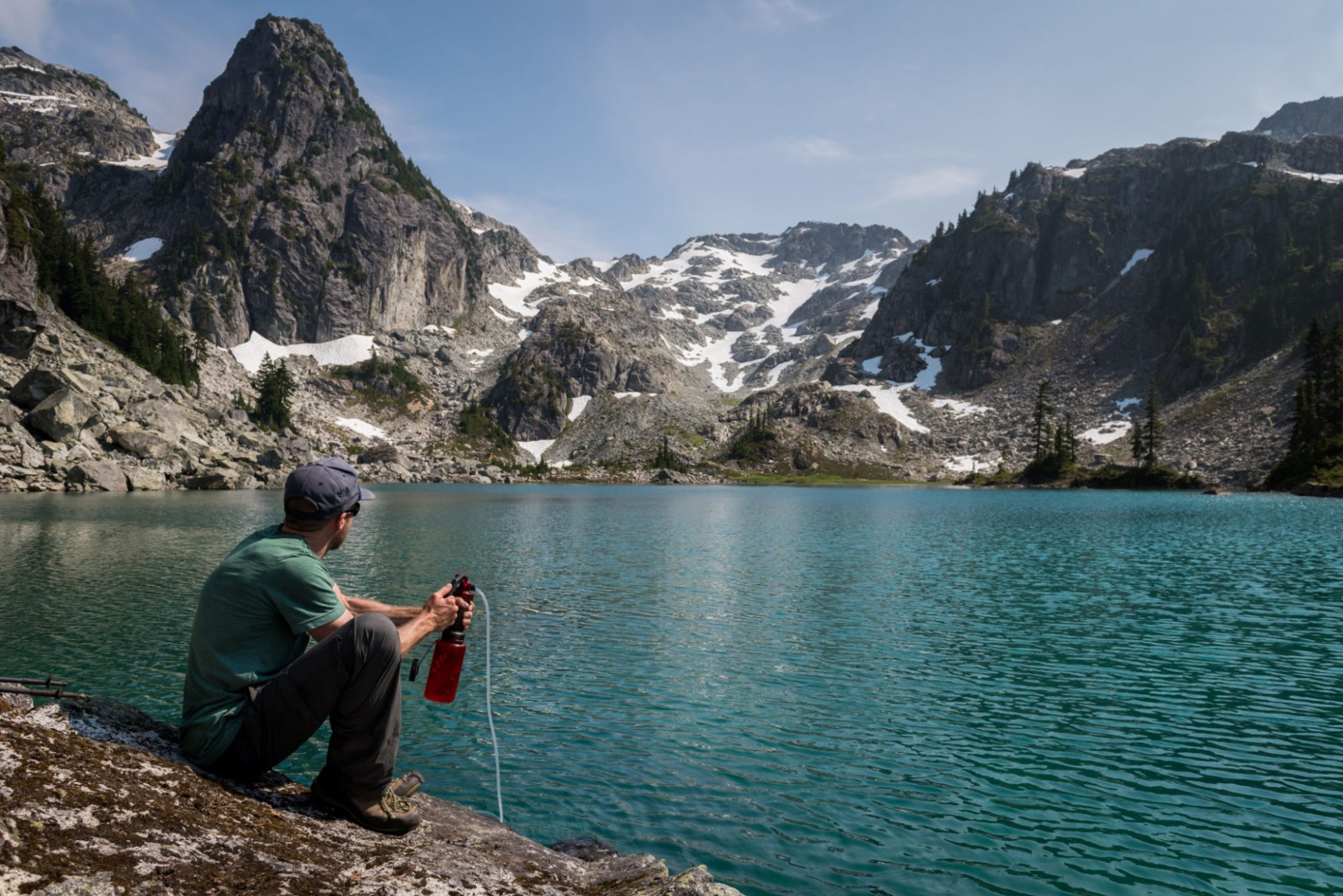Eating Right while Hiking and Camping
Two experts weigh in on why fueling your body with whole foods while on the trail can help you feel better and happier and enable you to tackle more miles.
I spent more than a week on the Appalachian Trail in 2015, trekking through Georgia before hopping off near Franklin, North Carolina. It was April and in the throes of thru-hiking season, which meant I shared the trail with dozens of others. At night, we chatted around campfires about where we came from, why we were hiking, and, inevitability, what we wanted to eat.
After a few days in the backcountry, it seemed as if food became less about sustenance and more an obsession. Upon reaching a fellow hiker, a common question became: “What are you eating?” In town, many of us headed straight to the junk food aisle to pick up sugary pastries, pizza, and ice cream.
Hiker hunger, as it’s called—an insatiable desire for calories and fat—is considered an inescapable part of long-distance hiking. But Lee Welton, a physical therapy assistant and personal trainer who runs Trailside Fitness, an online resource providing health and wellness training for hikers, says it doesn’t have to be.
During a 2018 thru-hike of the Pacific Crest Trail, “neither my wife Sarah nor I had hiker hunger,” Welton says. “We felt pretty content for most of the trail.” The couple was deliberate about what they ate—whole foods, little processed sugar, and as many fruits, nuts, and vegetables as possible.
“A lot of hikers think it’s Halloween and eat candy all the time,” Welton says. “The body burns it off, but it’s not getting what it needs to repair and refuel.” All of that processed sugar has no vitamins, proteins, or vital minerals that are essential to keeping your body fit. Welton says post-trail depression, another issue among long-distance hikers, might be worsened by a poor diet because low-quality foods can disrupt gut bacteria, which some scientists believe could be tied to mental health.
For the day or weekend hiker, a few days of poor eating may seem benign. But Katie Gerber, a nutritionist, and holistic health coach says even a day of hiking and fueling up with poor food can result in negative impacts.
“When you’re only eating high sugar and processed carbs, your blood sugar will spike and crash, causing you to crave more sugar and repeat that cycle,” Gerber says, who has logged thousands of miles on long trails. “It’s like you’re on a roller coaster all day long. Anyone who has been through that knows it’s not a fun experience.” Eating better quality foods on the trail, Gerber says, can lead to more consistent energy and a more enjoyable experience—plus, she says it’s better for your overall health.
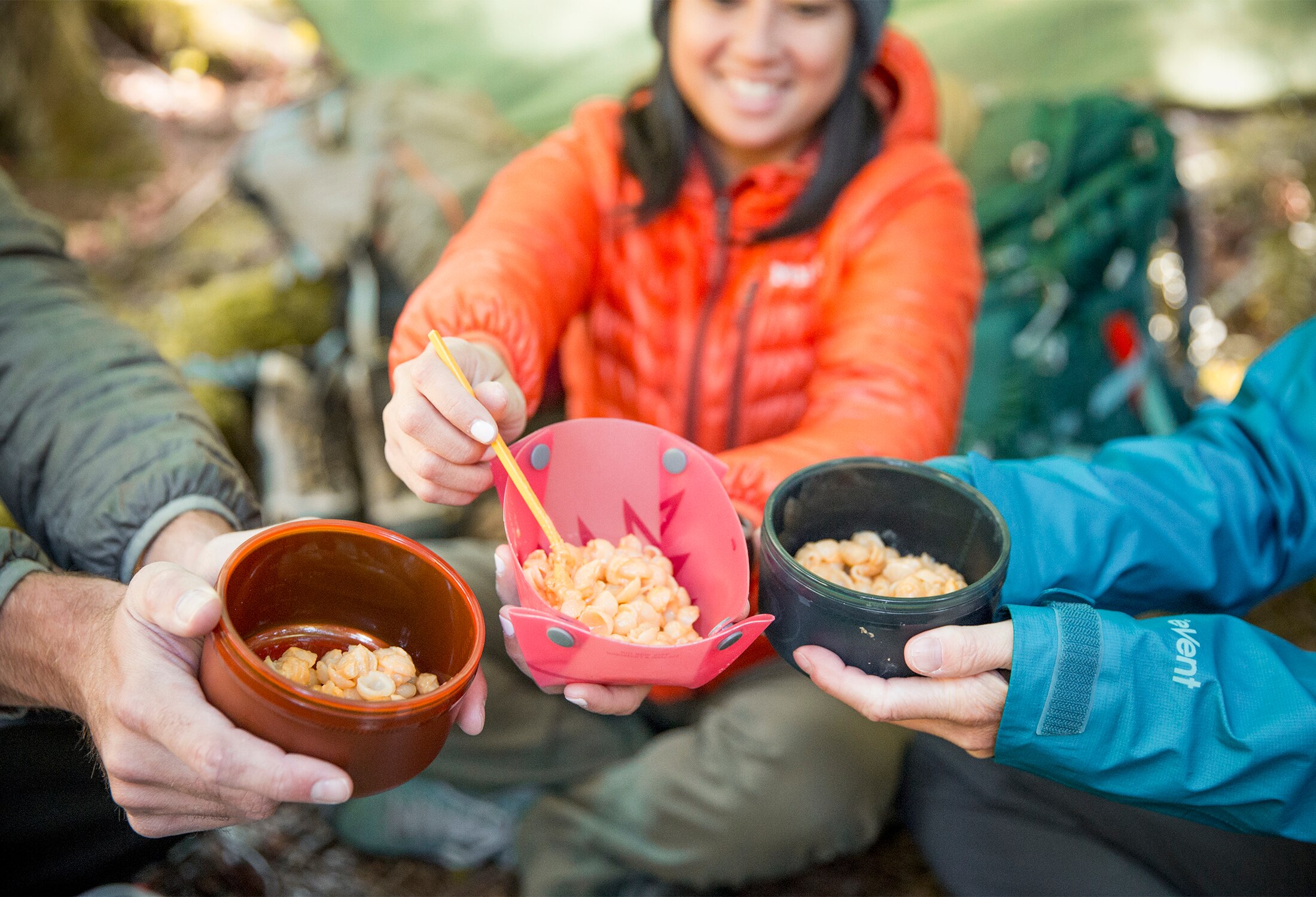
What Foods to Consume
So what should you eat on the trail? Gerber says she considers four aspects: calorie density, nutrient density, affordability, and accessibility. “Eating healthy doesn’t have to be expensive or hard—just focus on simple, whole food ingredients,” she says.
That includes healthy fats like olive oil or coconut oil, which can be added to plenty of meals, but also nut butter, like peanut or almond butter, and dark chocolate. Dried fruit and vegetables, granola, and trail mixes without processed sugar, as well as grains and legumes, are her go-to picks for micronutrients, protein, and carbs. “With packaged foods, I suggest looking at the ingredient list—the shorter the better,” she says.
Welton suggests eating fermented items, which are foods that contain beneficial bacteria for your gut. In towns, keep an eye out for kombucha, raw cheese, sauerkraut, or yogurt. When he hikes, he keeps a bottle of probiotic capsules handy, too, as fermented items can be hard to find in some trail towns.
Produce like fresh apples and oranges can be heavy, but are good treats that can be consumed on the first few days of a trip. Welton says fresh spinach—high in calcium and potassium—goes well with dehydrated veggies, mushrooms, onions, and garlic.
Welton admits that cravings for food like pizza and hamburgers are normal, and he and Sarah would, at times, indulge in those during their thru-hike. “But we had a salad and kombucha first, or maybe sauerkraut or yogurt, to feed our good gut bacteria before we ate fries and drank beer. It was more of a novelty to have traditional hiker foods.”
Eating at the Right Time
It can be helpful to consider when to eat wholesome foods on the trail to ensure you are getting all the energy and nutrients you need. Consistency is also important, Welton says, to keep you fueled and to prevent injuries. “Every 90 minutes, I would eat,” he says. “For me, stumbling on a branch or rock was a signal that, even if I wasn’t hungry, I needed to eat something.”
Breakfast
Welton says he tries to consume complex carbohydrates, in the morning. Your body digests these foods slowly, so eating them early means they’ll continue to provide energy throughout the day. That can include bagels, granola, or oatmeal along with powdered milk for fat. Gerber says not to forget about micronutrients, such as zinc, which is available in cashews and pumpkin seeds, or vitamin C, which is found in dehydrated broccoli and peppers. These crucial vitamins and minerals help with everything from regulating metabolism to helping your body ward off illness. Pair micronutrients with a good source of fat and protein like nut butter, she says, for “sustained energy so you don’t have that mid-morning crash.”
Snacks
In between meals, Welton reaches for granola bars and nut butter that are as minimally processed as possible. That means no added sugars or hydrogenated oils in the ingredients—peanut butter, for instance, should ideally be only peanuts and salt. “I’m looking for protein, fat, and calories,” he says.
Welton also mixes nut butter with raisins or fruit, which can be a good way to ingest simple sugars for a quick burst of energy before a tough climb.
Lunch
When midday rolls around, Welton turns to a mix of protein and fat. He says good sources include chickpeas or tuna packets.
For sustained energy, Gerber recommends eating dehydrated hummus and olive oil. She likes to dip corn chips (Gerber recommends organic) in the hummus dip for quick-burning energy from the carbs. Another option is almond butter paired with a dried banana on a tortilla. “The almond butter and banana have valuable micronutrients like vitamin E, magnesium, and potassium,” she says.
Dinner
In the evenings, it can be helpful to eat carbs to help restore muscle glycogen overnight so that you’ll be ready to hike again the next day, according to our experts. A well-rounded meal consists of dehydrated black beans, which provide fiber and protein, and kale, one of the most nutrient-dense foods available, with vitamins A, K, C, B6, and more. “Add anti-inflammatory spices like curry powder or garlic,” she says, adding that it could help prevent decreased energy and improve recovery time.
Welton also recommends adding fats like extra virgin olive oil, cheese, and pine nuts to your dinner in order to help yourself feel full and get a good night’s sleep.
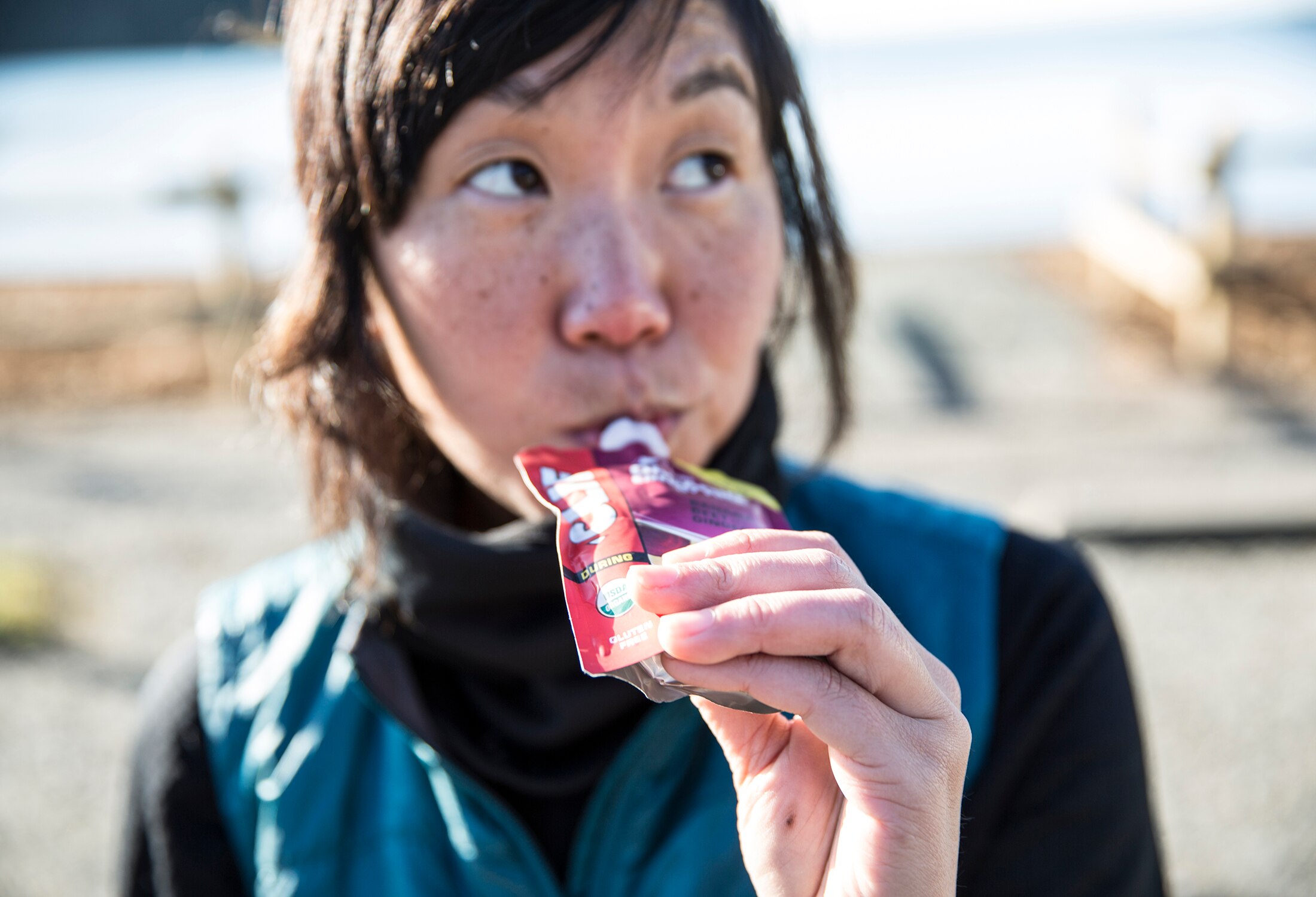
Recipes
Alfredo Pasta Dinner
At dinner, when Welton was really looking for calories, he and his wife Sarah cooked pasta that “we never got sick of,” during their six months on the PCT. To prepare, boil the pasta, then pour in the sauce and simmer, stirring in the chicken and veggies (add water if needed). When cooked, add in the cheese, pine nuts, and olive oil.
Ingredients
- Organic alfredo sauce mix
- Freeze-dried chicken, onions, and tomatoes
- Cheddar cheese
- Olive oil
- Topped with pine nuts
Overnight Oats
Overnight oats are a favorite breakfast option for Gerber, as they include “complex carbs, protein and healthy fat with anti-inflammatory spices.” To prepare, mix the ingredients in a jar of water before bed. Overnight, the oats will soften so that, in the morning, they’re ready to eat without cooking.
Ingredients
- Rolled oats
- Chia seeds
- Coconut
- Walnuts
- Cinnamon
- Ginger


